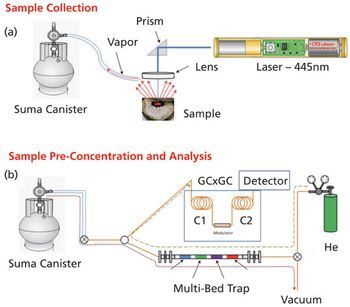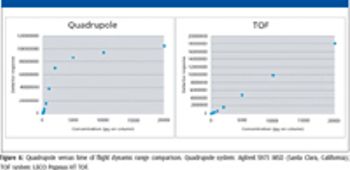Articles by Mark Libarondi

The development of analytical instrumentation for harsh terrestrial environments and outer planet space exploration exponentially
increases instrument requirements-for features such as robustness, autonomous operation, and speed-and poses unique
system integration challenges. Here, we explore the use of laser thermal desorption coupled to comprehensive two-dimensional
gas chromatography (LTD-GC×GC) for use with a compact, high-resolution mass spectrometer for challenging applications.

The authors explain some of the primary differences between quadrupole and time-of-flight mass analyzers and provide information regarding the benefits of each in their use for gas chromatography applications.

Gas chromatography and comprehensive two-dimensional gas chromatography with time-of-flight mass spectrometry (GC–TOFMS and GCxGC–TOFMS) were utilized to develop trace-level calibration curves in brewed green tea spiked with organochlorine and organophosphorus pesticide standards. A sensitive and robust calibration curve was developed from 10 to 500 parts per trillion (ppt), which allowed quantitative results to be determined for organochlorine–organophosphorus pesticides in brewed green tea. Exceptional limits of detection were achieved by GC–TOFMS and GCxGC–TOFMS at or below 10 ppt (solution concentration) for all but one of the pesticides. Stir bar sorption extraction (SBSE) was utilized to isolate the pesticide components from brewed green tea samples prior to analysis by GC–TOFMS and GCxGC–TOFMS. Different types of green tea were analyzed qualitatively by SBSE and GC–TOFMS with subsequent quantification for organochlorine–organophosphorus..







